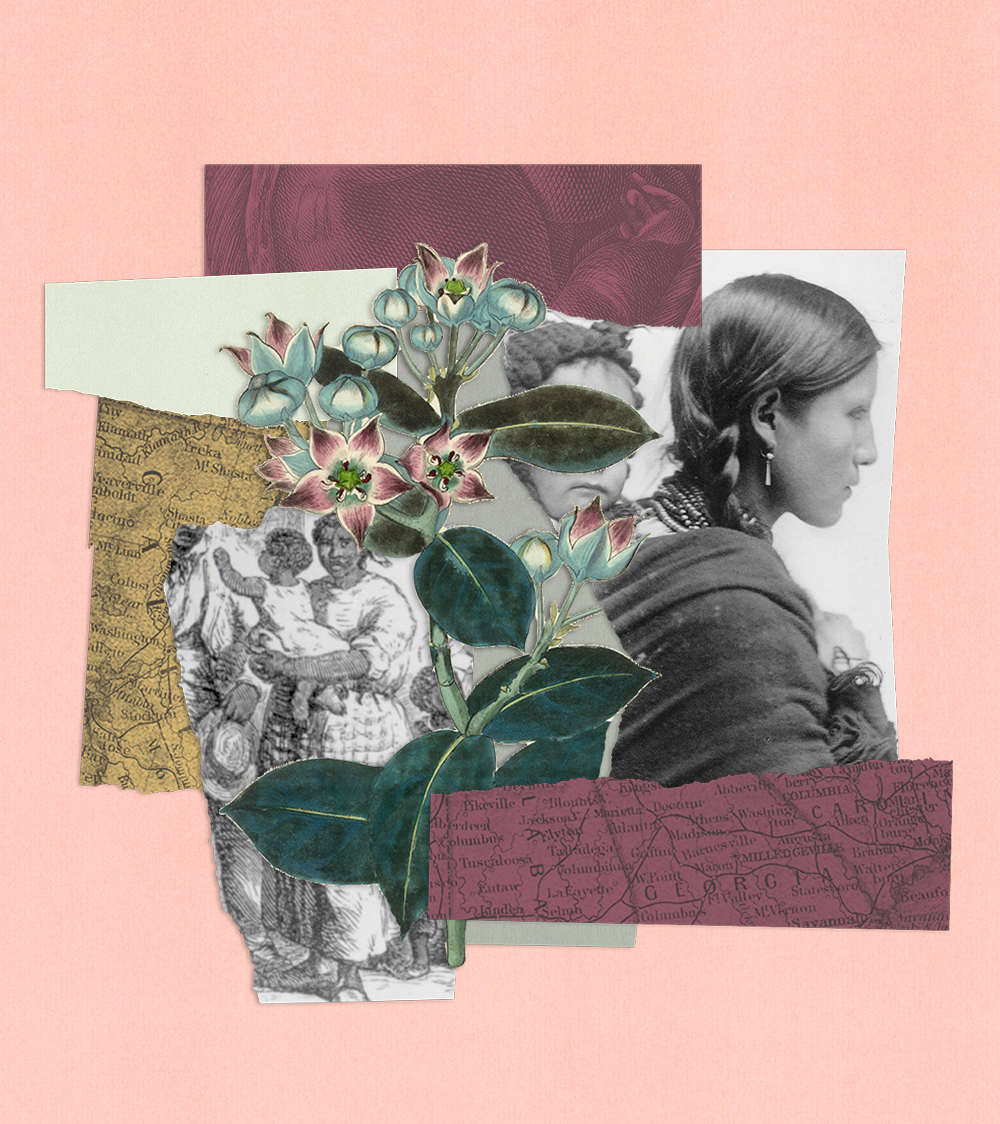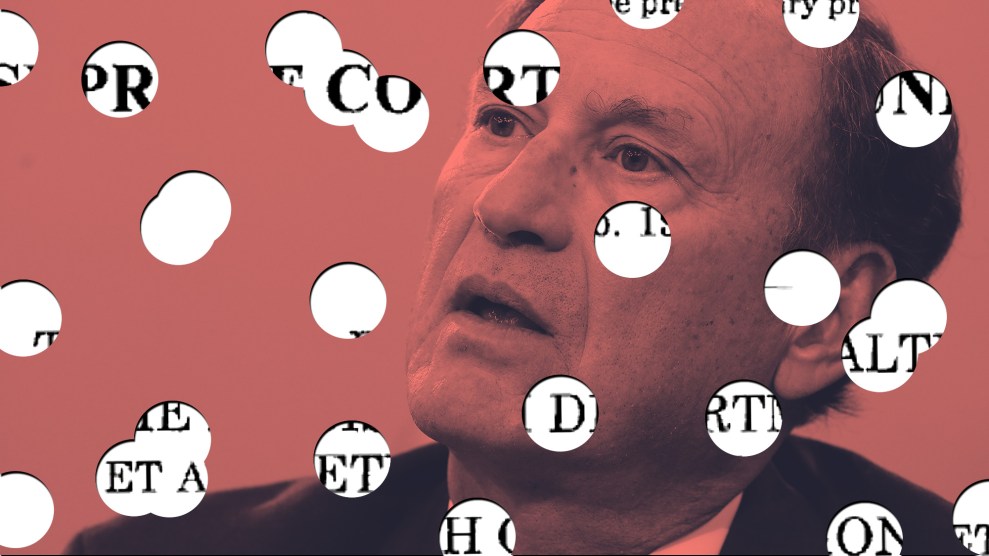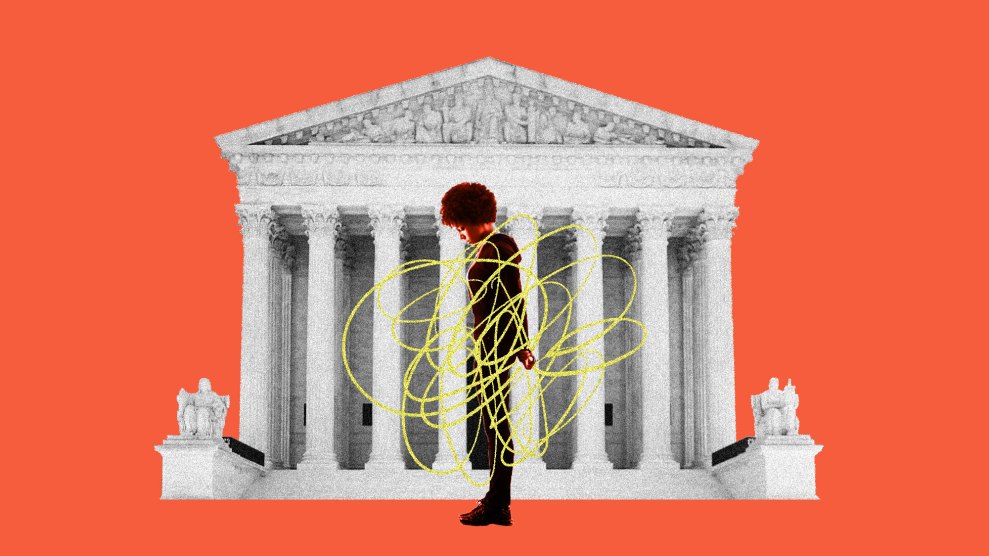This article is adapted from the forthcoming book No Choice: The Past, Present, and Perilous Future of Abortion in America, published by Hachette Book Group.
In Justice Alito’s leaked draft opinion that, if made official as a decision this summer would overturn Roe v. Wade and Planned Parenthood v. Casey, he refers repeatedly to “this Nation’s history and tradition” as being at odds with abortion rights.
It begs the question: Whose history, precisely, is Alito considering here?
Too often, when “this Nation’s history and tradition” is boiled down into such a broad generalization, it’s the “history and tradition” of the white Christian men who have held power in the United States since its inception. But make no mistake, this country does not belong to them alone, and our history encompasses so much beyond their experiences and beyond the white supremacist ideals our nation was founded upon.
Before this land was stolen by colonizers who called it America, it belonged to Native peoples who had inhabited it for centuries. And, as it turns out, people indigenous to America have a long, intimate “history and tradition” related to abortion and reproductive care. For one, they shared knowledge of which herbs can help a woman control her body. Stoneseed and dogbane, which have natural contraceptive properties, were used by the Shoshone peoples and the Bodéwadmi to prevent pregnancy. Studies of indigenous cultures also turn up evidence of commonplace abortion practices—a South American matrilocal native tribe known as the Wichí reportedly abort the first pregnancy of any tribal member; it’s a matter of routine, to make the childbirths that follow easier. North American native tribes, too, have documented abortion practices that prioritize the health and well-being of the person carrying the fetus and their quality of life.
This is conveniently absent in Alito’s opinion. We know why: That is what happens when The Narrative is controlled by a certain class of people. We lose the history that belongs to everyone else. We are not a nation of solely—or even primarily—white Christians.
But sure, even if we want to take a Eurocentric framing here, abortion has always been a normal part of life.
In the Middle Ages, as male church and state leaders began to deem women as the inferior gender, formal education was reserved generally for their own sex. By the mid-14th century, these men passed laws to regulate how surgery could be practiced and by whom, further pushing women out of the field. The creation of professionalized medicine was instigated by a desire to shift power and authority from women to men, while keeping the (unpaid) domestic expectations of women fully intact. The health of the household remained a responsibility that was gendered female.
Still, the health of the body remained a woman’s concern, but now women were hunted when they provided care. Across Europe, from the 14th century through the 17th century, women were deemed witches and persecuted for any perceived sexual sin, including vague accusations of “lewdness.” This applied to the female healers who were core providers of reproductive health care—which, yes, encompassed contraception and abortion, and relied largely on herbal remedies, some of which are still used by holistic health practitioners and modern midwives. Abortion then was not considered a crime by law (even if it was seen as such in the eyes of the church, which doled out its own punishments accordingly, usually through excommunication and shaming).
As Europeans later traveled to the new world, so did the panic around female sexuality that defined their witch-hunt fervor. And, like in Europe, women in America continued to seek personal control over their reproductive agency in the face of patriarchal values. In some ways, they were even at an advantage given the lack of knowledge and fear held by men regarding female bodies.
In parallel to the traditions of the indigenous women on the land before them, Leslie J. Reagan explains in When Abortion Was a Crime that “one colonial woman who feared pregnancy had ‘twice taken Savin; once boyled in milk and the other time strayned through a Cloath.’” Reagan found that “Savin, derived from juniper bushes, was the most popular abortifacient and easily acquired since junipers grew wild through the country. Other herbs used as abortifacients included pennyroyal, tansy, ergot, and snakeroot.” And in the 18th century and before, women shared with each other ways to “restore the menses,” relying on drugs and herbal concoctions to bring forth what had been blocked by a pregnancy; it was seen as a simple solution to a disruption in bodily function and a way to bring the body back into balance.
Of course, enslaved Black women in America faced even more violence and trauma that attacked traditions of care and of motherhood. “For slave women, procreation had little to do with liberty,” writes Dorothy Roberts in Killing the Black Body: Race, Reproduction, and the Meaning of Liberty. “To the contrary, Black women’s childbearing in bondage was largely a product of oppression rather than an expression of self-definition and personhood.” Some enslaved Black women used sexual abstinence or herbal abortifacients as a form of rebellion, including “the infusion or decoction of tansy, rue, roots and seed of the cotton plant, pennyroyal, cedar gum, and camphor,” according to one 1860 medical record from a white physician in Tennessee. Care was rooted in community: Enslaved women shared medical knowledge with each other, and preserved that knowledge through generations. Roberts writes that herbal skill was likely brought over from Africa and passed down through oral tradition by midwives who had been captured and taken to America to live out their lives in bondage. A refusal to bear children was a powerful statement for an enslaved woman—in doing so, they denied their enslavers economic gains. Another common scenario was when an enslaved woman was raped by a white man, she may seek abortifacients. And in some cases, a woman would kill her newborn out of desperation to not cede her child to the horrors of slavery, which would likely mean an eventual loss of the child anyway; nearly one in three Black babies living in the Upper South in 1820 were sold off to enslavers who whisked them away from their families.
Yet Black motherhood was and remains an important liberty and rebellion against white supremacy. These women were forced to consider their long-term survival; some were told they would be freed if they gave birth to a certain number of healthy children. As Loretta Ross and Rickie Solinger note in their book, Reproductive Justice: An Introduction, all decisions made by Black enslaved women regarding their reproductive lives that were outside their enslavers’ wishes “constituted a woman’s claim of full personhood—her linkage of her reproductive life to human freedom.” There was also the labor done by Black enslaved women in their own households, in the devotion of their own families, as “a form of resistance, directly benefiting Black people rather than their white masters alone,” Roberts notes. “Further, although a slave woman’s act of giving birth enhanced the master’s workforce, it just as surely ensured the life of the slave community.”
Because these women were abused and silenced, it is almost impossible to know the full extent of how and under what circumstances they chose to exercise their limited control over their reproductive lives. In researching my book, it is a challenge that has come up again and again—those who have sought basic agency but have been denied it, in the name of patriarchy or white supremacy or both, have also been allowed the fewest avenues to tell their stories. But for Alito and his peers, it’s likely only a boon.
And there’s still another part of this history the Supreme Court justice does not tell: The exploitation, marginalization, and violence committed by men like him to dismantle the reproductive autonomy of women, particularly women of color.
Some enslavers forced enslaved people to “breed,” like livestock, based on favorable attributes that they thought might manifest in future laborers. Black enslaved women were often not afforded the dignity of choosing their sexual partners. Mothers’ milk was not even sacred—Black women were often expected to serve as wet nurses for their enslavers’ offspring, nurturing another generation of oppressors with their bodies. Further, enslaved Black women’s bodies were experimented on, notably by James Marion Sims, known as the “father of modern gynecology,” who did not use anesthetics on his victims. In Killing the Black Body, Roberts writes vividly of the horrifying acts sprung from the imaginations of white slaveholders upon pregnant women. She explains one particularly cruel practice: A Black woman, facedown in the dirt, a hole dug for her swollen belly so that the fetus inside her would be protected by the earth, while she was mercilessly flayed for some alleged crime.
Native women were similarly subjugated and subjected to “professionalized medicine,” beginning as early as the 1830s, when the Ho-Chunk peoples (also called the Winnebago) were coerced into a treaty that exchanged land in what became Wisconsin for the promise of health services. This marked the early beginnings of the federal Indian Health Service, officially founded in 1955, which, scholar Jane Lawrence observes, approached the Native people it was meant to serve as though they were less than human in their intelligence and morality. (In the context of departments like “Indian Health Service,” the word “Indian” is a legal designation.) This ideology led to egregious human rights abuses: “Some of [the IHS doctors] did not believe that American Indian and other minority women had the intelligence to use other methods of birth control effectively and that there were already too many minority individuals causing problems in the nation,” writes Lawrence.
Forced sterilization of Native women began in the 1960s and was often hidden behind alleged treatments for appendicitis or in the bewildered, exhausted aftermath of birth. A Government Accountability Office report found that 3,406 Native women were sterilized without proper consent between 1973 and 1976 among IHS hospitals and IHS-contract facilities in four regions. The stories from this period are horrific: Two 15-year-old Cheyenne girls were robbed of their reproductive capabilities during what they were told was an appendectomy. Another Native woman, who was suffering severe headaches, was prescribed a hysterectomy, as a physician chalked up her pain to “female problems.” Eventually, it was discovered that she was being plagued by a brain tumor. Yet another Native woman, who was wrestling with alcoholism, went to seek medical help for her affliction, and the IHS doctor sterilized her, telling her she could have a “womb transplant” when she was ready to have children. When she later went to a doctor to request the transplant so she and her future husband could build a family, she was distraught when she was told there was no such thing.
When Native women did bear children, the state interfered. Those who were thought to have too many children were threatened with loss of welfare benefits, and children were also taken from their families and put in foster care for absurd infractions. Native kids were also funneled into government-run boarding schools, where they were not allowed to wear their Native dress, speak their language, or worship any god other than the Christian god.
Despite all of this history, or perhaps because of it, abortion wasn’t considered a matter for the legal sphere in the United States until shortly before the Civil War. Common law, which Justice Alito seems to put a great deal of stock in, accepted abortion as fairly routine up until “quickening,” when the fetus can be felt moving within the uterus. Alito actually concedes to this. But as my colleague Pema Levy explains, he yet again has the facts, let’s say, mixed up. The concept of “quickening” dates back to Aristotle, who said male fetuses “quickened”—that is, began to move—in the womb after 40 days, while female fetuses take somewhere around 80 to 90 days to do the same. No one seems sure of where Aristotle’s idea came from—let alone how fetal gender was determined with any sort of accuracy—but the word itself comes from the root word “quick,” which was once a synonym for “living.”
States in the 19th century began to debate quickening as the bright line up to which abortion was perfectly acceptable, and the courts hewed to the concept for most of that time. Decreeing abortion as acceptable up until “quickening” is, in a certain way, evidence that pregnant people were trusted in those times; after all, no one can tell that the fetus has quickened except for the person carrying it. Alito, though, seems ready to police this, too—noting in his opinion that quickening “usually occurs between the 16th and 18th week of pregnancy.” But, as Levy writes, “There’s no source in Alito’s footnotes except the long-dead British authors of common law he is taking inspiration from, including Sir Matthew Hale, a 17th century judge who sentenced two women to death for witchcraft and defended marital rape.” (There’s that pesky witchcraft again.) In fact, Levy explains, “Most sources suggest that those first sensations are most common between 18 and 22 weeks of pregnancy. The UK’s National Health Service pegs the normal range at 16–24 weeks, broader and later than Alito’s claim.”
Is this the sort of “history and tradition” Justice Alito and the rest of the bench hope to preserve? If he and his peers were to honestly excavate the “Nation’s history and tradition” of the rights of birthing bodies, they would know there’s not much to be proud of. They’d also know that when faced with orders from those who cannot know what it is to exist in a body capable of producing life, we will find a way.
Image credits from left: Library of Congress, Getty, Howard D. Beach/Library of Congress

















